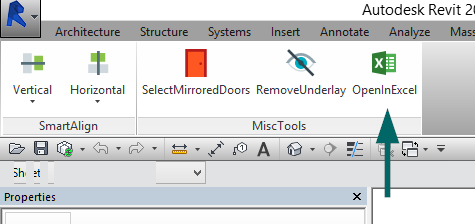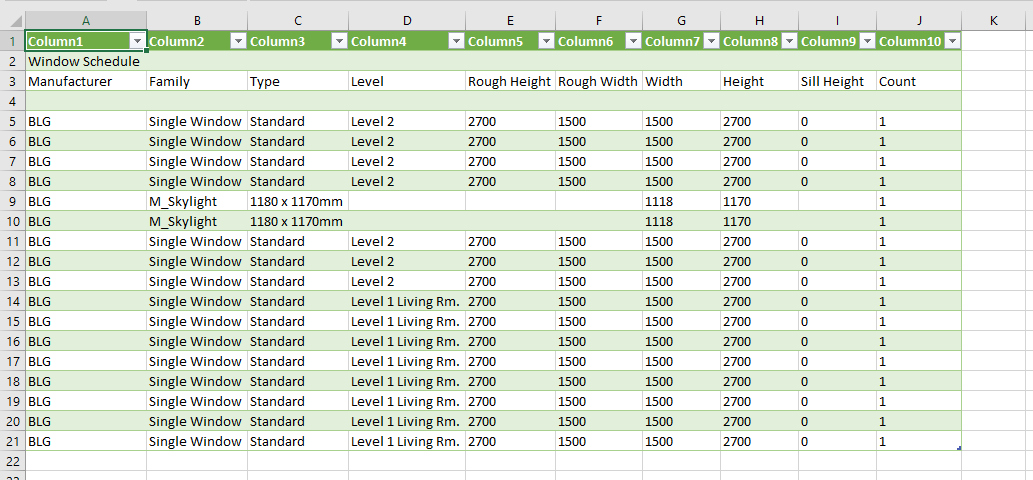Revit Excel Assimilation Demystified: Improving Process for Boosted Project Control
Look no further, since Revit Excel Integration is here to debunk the procedure and simplify your tasks. In this write-up, we will certainly lead you via the importance of Revit Excel Combination, show you exactly how to enhance process, and offer best techniques for successful assimilation.
The Significance of Revit Excel Integration
You need to comprehend the relevance of Revit Excel integration to successfully simplify your workflows and improve task coordination. The integration of Revit, a powerful structure details modeling (BIM) software application, with Excel, an extensively made use of spreadsheet program, offers numerous benefits for architects, engineers, and building experts.

By integrating Revit with Excel, you can get rid of hands-on data entrance and minimize the danger of mistakes. This not only saves time however likewise makes sure precision in your job paperwork. You can upgrade data in Excel, and it will instantly upgrade in Revit, preserving uniformity throughout your job.
Moreover, Revit Excel combination improves project coordination by enabling effective collaboration amongst group participants. With information synchronized between Revit and Excel, everyone can access the most up-to-date information and collaborate flawlessly. This advertises smoother interaction, lowers problems, and boosts overall project effectiveness.
Just How to Simplify Workflows With Revit Excel Integration
Optimize your procedure by flawlessly attaching Revit and Excel to enhance your operations. By integrating these two effective tools, you can improve job coordination and improve efficiency in your job. With Revit Excel assimilation, you can easily move data between the 2 platforms, enabling seamless communication and collaboration.

One more benefit of Revit Excel integration is the capacity to create custom-made records and evaluate information better. With Excel's durable features, you can do innovative calculations, produce charts and charts, and generate extensive records based upon the information from your Revit models. This allows you to acquire useful understandings and make informed decisions throughout the task.
Enhancing Job Coordination With Revit Excel Combination
By seamlessly linking your layout software with powerful information evaluation devices, you can considerably enhance the control of your tasks. Revit Excel assimilation allows you to enhance your operations and enhance job control by removing hand-operated information entry and reducing errors. With this combination, you can quickly transfer data between Revit and Excel, making sure that all task details is up to date and precise.
Among the crucial advantages of Revit Excel assimilation is the ability to import and export data between both software application flawlessly. This means that you can easily import existing project data from Excel right into Revit, saving you effort and time in coming back details. In a similar way, you can export job data from Revit to Excel, allowing you to perform advanced analysis and computations using the powerful features of Excel.
In Addition, Revit Excel integration allows you to develop vibrant links in between the 2 software application (revit add ins). This implies that any type of changes made in Revit will instantly update in Excel, and the other way around. This makes certain that all job stakeholders are dealing with one of the most up-to-date details, boosting job coordination and reducing the risk of mistakes
Overcoming Obstacles in Revit Excel Combination
When getting over challenges in the combination of Revit and Excel, it's vital to ensure seamless data transfer and reduce mistakes. One typical obstacle is the compatibility of information layouts in between Revit and Excel.
Another challenge is the lack of synchronization in between Revit and Excel. It's crucial to establish a clear process that makes certain both platforms are updated in real-time. This can be accomplished by using cloud-based partnership devices or developing a system for normal data syncing.
Handling big datasets can additionally be bothersome. When it comes to managing huge quantities of data, revit and Excel have different capabilities. To overcome this challenge, you can split the data into smaller, manageable pieces or make use of information filtering system techniques to concentrate on particular areas of rate of interest.
Finally, human mistake can cause inconsistencies in between Revit and Excel information. It is necessary to educate employee on the assimilation procedure and establish quality assurance procedures to capture any type of errors. Regular audits and cross-checks can help identify and rectify any variances.
Finest Practices for Successful Revit Excel Integration
To ensure successful integration of Revit and Excel, it is essential to adhere to some best techniques that will certainly aid simplify your operations and lessen errors. Firstly, constantly begin by producing a clear and orderly folder structure for your project documents. When required, this will certainly make it simpler to locate and upgrade the needed files. In addition, when linking Excel data into Revit, make sure that the data is clean and complimentary from any formatting problems that can create errors. Usage constant calling conventions for your Excel columns and worksheets to avoid complication.
One more crucial method is to on a regular basis upgrade your Excel data in Revit. Make it a practice to evaluate and update the information at normal periods, especially when changes are made to the job.

Verdict
So, there you have it - revit Excel integration doesn't have to be a complicated job. By simplifying your process with this powerful combination, you can enhance task control and attain better effectiveness. Keep in mind to conquer any challenges that may emerge and adhere to finest methods for successful integration. With revit Excel integration demystified, you'll be well on your means to making best use of the potential of these devices and taking your jobs to new heights.
You can revit tool export your Revit timetables to Excel, make adjustments or updates in Excel, and then import the upgraded information back into Revit with just a few clicks. Revit Excel assimilation permits you to enhance your workflows and boost job control by getting rid of manual information entry and reducing errors. With this integration, you can conveniently transfer information in between Revit and Excel, making sure that all project details is up to day and accurate.
You can export task data from Revit to Excel, allowing you to perform innovative evaluation and calculations making use of the effective features of Excel.
In addition, when linking Excel information right into Revit, ensure that the information is clean and complimentary from any format concerns that can cause errors.